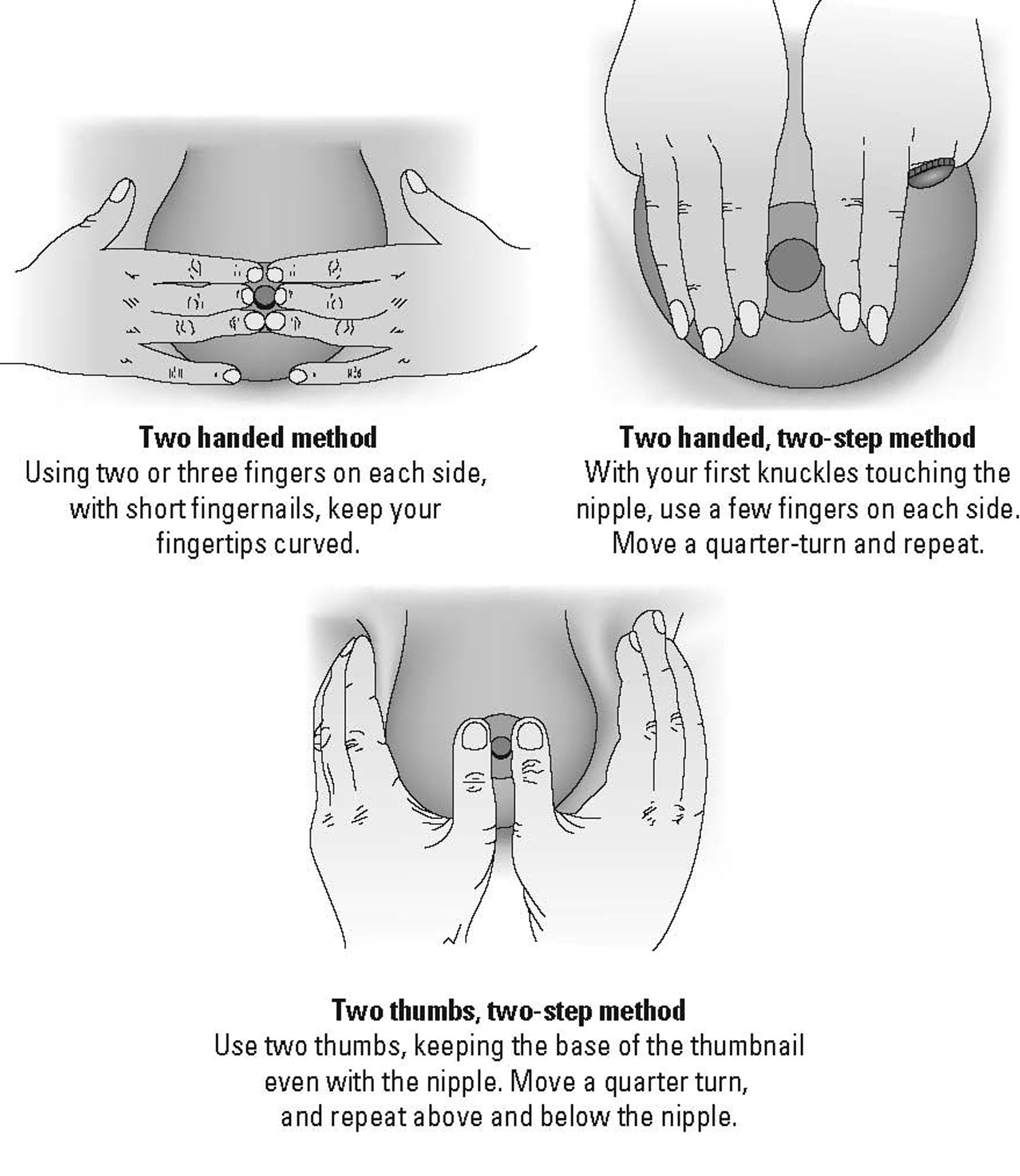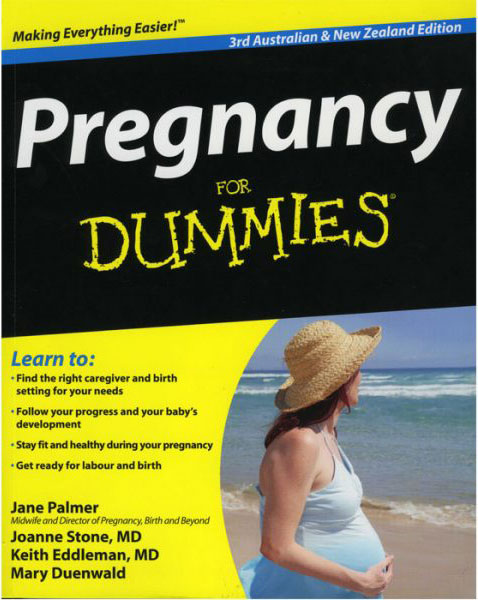When breasts are engorged or nipples swollen, your baby may have difficulty attaching to the breast. Reverse pressure softening is a simple technique developed by Jean Cotterman that can help with attachment in these cases. The technique can be used in the first two weeks after the baby’s birth and you can perform it easily yourself. Reverse pressure softening works by moving swelling backwards and upwards into your breast, extending your nipple and enabling easier attachment. The technique has the additional benefit of helping to move breast milk forward, ready for your baby.

To apply reverse pressure softening, choose one of the techniques shown in the following figure and place your fingers accordingly. Gently but firmly, press inwards towards your ribs. Maintain the pressure for at least one minute and up to three minutes. You may see indentations from your fingers, which is fine. You’re aiming to soften an area of two to three centimetres around the nipple. You should feel no discomfort while doing reverse pressure softening. Attach your baby to the breast while the circle around the areola remains soft. Repeat the technique as often as required.

Additional Information on Reverse Pressure Softening
On the basis of further research, Jean Cotterman now recommends this technique be used while laying on your back as it is more effective.
This article is an excerpt from Pregnancy For Dummies 3rd Edition (Australian and New Zealand Edition). Copyright John Wiley. Reproduced with permission.
Pregnancy For Dummies
Your complete guide to having a healthy, happy pregnancy. This updated and the expanded third edition of Pregnancy For Dummies offers mothers-to-be practical advice and expert guidance on every stage of their pregnancy — and beyond! Understand what’s happening with your baby and your body, and be guided through what to expect from labour, birth and becoming a new parent. Purchase Online…
Revised 23rd August 2020



Recent Comments